-
How to respect local customs & traditions in Ha Giang
Ha Giang is not only known for its breathtaking landscapes but also for its diverse ethnic communities and rich cultural traditions. Travelers visiting this northern province should take the time to understand and respect the customs of the local people. By doing so, you will enhance your travel experience and foster positive interactions with the communities you encounter. Here’s a guide to help you navigate Ha Giang travel with cultural sensitivity.
Dressing Modestly in Ethnic Villages
Many of the ethnic groups in Ha Giang, such as the Hmong, Tay, and Dao people, have conservative dress customs. When visiting villages, markets, or religious sites, it is best to wear modest clothing that covers your shoulders and knees. Ha Giang weather can vary, so bringing lightweight yet respectful attire is essential, especially if you’re riding along the loop and staying in Ha Giang Loop hostels.
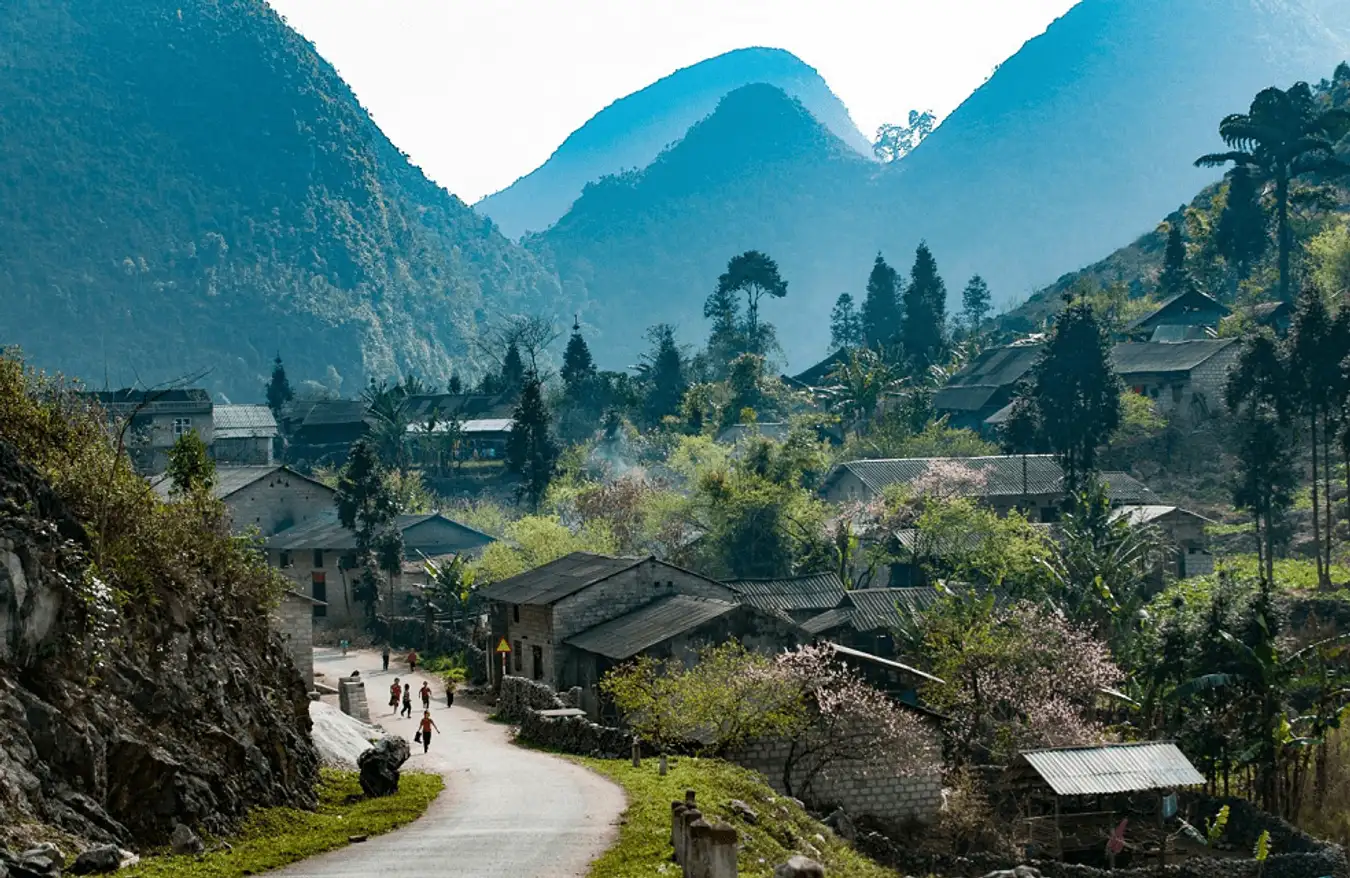
Seeking Permission Before Taking Photos
Photography is a great way to capture the beauty of Ha Giang, but it is important to respect the privacy of local people. Before taking pictures of individuals, especially elders and children, always ask for permission. A simple smile and gesture can go a long way in showing respect. In some areas, photography may be restricted due to spiritual or cultural beliefs, so always be mindful of the surroundings.
Greeting Locals with Respect
Each ethnic group in Ha Giang has its own way of greeting, but a friendly nod or a slight bow is usually a safe approach. Some communities may not be accustomed to handshakes, so avoid initiating physical contact unless locals do so first. Learning a few simple Vietnamese phrases, such as “Xin chào” (Hello) and “Cảm ơn” (Thank you), can also help build rapport with the people you meet during your Ha Giang travel experience.
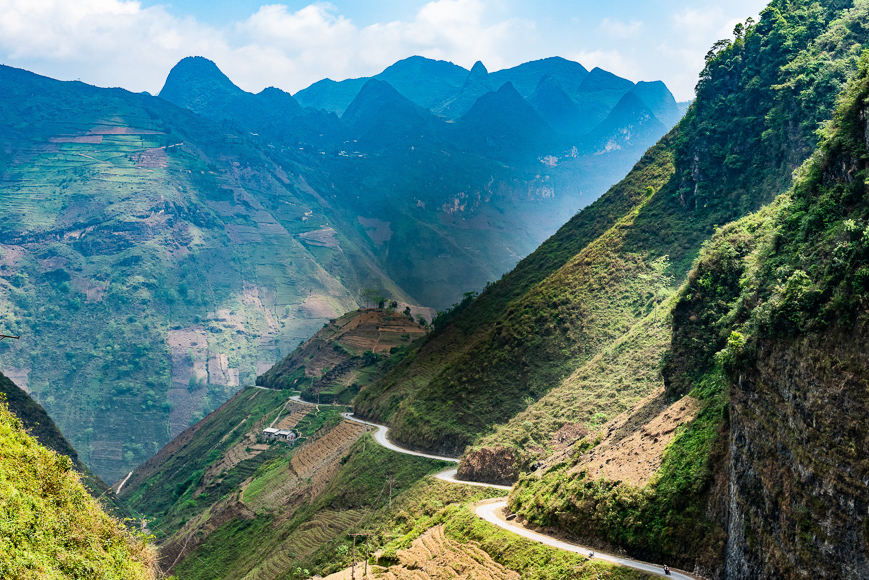
Being Mindful of Sacred Sites and Rituals
Many villages have sacred sites, such as communal houses, temples, and ancestral altars. When visiting these places, dress appropriately and behave respectfully. Avoid touching ritual objects or interrupting ceremonies. If you are invited to observe a local festival, follow the guidance of your hosts and do not disturb traditional performances or religious practices.
Showing Courtesy When Invited into a Home
Hospitality is an important part of Ha Giang’s culture, and you may be invited into a local home for tea or a meal. If this happens, remove your shoes before entering and accept any food or drink with both hands as a sign of gratitude. It is considered polite to take at least a small sip or bite, even if you are not hungry. Be aware that alcohol, particularly corn wine, is often offered, so know your limits and decline respectfully if necessary.

Bargaining with Respect at Local Markets
Visiting traditional markets is a highlight of Ha Giang travel, where you can buy handmade crafts, textiles, and fresh produce. Bargaining is common, but it should be done with a friendly attitude. Avoid aggressive haggling, as prices are often fair, and vendors rely on their earnings to support their families. At famous markets like Dong Van or Meo Vac, respecting local business practices contributes to a positive experience.
Avoiding Public Displays of Affection
Public displays of affection, such as hugging and kissing, are uncommon in Ha Giang’s rural areas. While it may be normal for travelers, it can make locals uncomfortable. If you are traveling as a couple, it’s best to keep physical contact minimal in public spaces, especially in traditional villages.
Being Considerate When Riding the Ha Giang Loop
The Ha Giang Loop is a thrilling adventure, but it’s important to ride with awareness and respect. Many roads pass through small villages where children play and animals roam freely. Slow down when riding through these areas, avoid loud honking, and respect local road rules. Staying in Ha Giang Loop hostels can also give you opportunities to learn more about the customs and expectations of different communities.

Supporting Local Businesses and Artisans
One of the best ways to show respect for Ha Giang’s traditions is by supporting local artisans and businesses. Purchasing handmade textiles, locally grown tea, or traditional crafts directly from villagers helps sustain their economy and preserves their heritage. Many families rely on tourism, so being a responsible traveler makes a meaningful impact.
Leaving No Trace and Protecting the Environment
Ha Giang’s stunning landscapes are a key reason why travelers visit, but preserving the environment is just as important as respecting its people. Always dispose of trash properly, avoid using plastic bags, and respect local wildlife. Whether hiking, camping, or staying at Ha Giang Loop hostels, leaving no trace ensures that future visitors can enjoy the beauty of this region just as you have.
Conclusion
Respecting local customs and traditions in Ha Giang enhances not only your travel experience but also the connections you make along the way. By dressing modestly, being mindful of cultural practices, and supporting local communities, you contribute to responsible tourism. Whether you’re exploring Ha Giang weather’s diverse seasons or riding the Ha Giang Loop, being a respectful traveler makes all the difference.
PR -
Top 10 must-visit attractions in Ha Giang
Ha Giang is a breathtaking destination in northern Vietnam, known for its rugged landscapes, ethnic diversity, and thrilling motorbike routes. Whether you're an adventure seeker or a cultural enthusiast, there are plenty of must-visit spots that showcase the region’s natural beauty and rich heritage. To make the most of your Ha Giang travel experience, here are the top 10 attractions you shouldn't miss.
Dong Van Karst Plateau Geopark
As a UNESCO Global Geopark, Dong Van Karst Plateau is a must-see for geology lovers and landscape photographers. This area features stunning limestone formations, deep valleys, and ancient fossils dating back millions of years. Visitors can explore the winding roads that lead through picturesque villages and witness how Ha Giang weather shapes the breathtaking scenery.
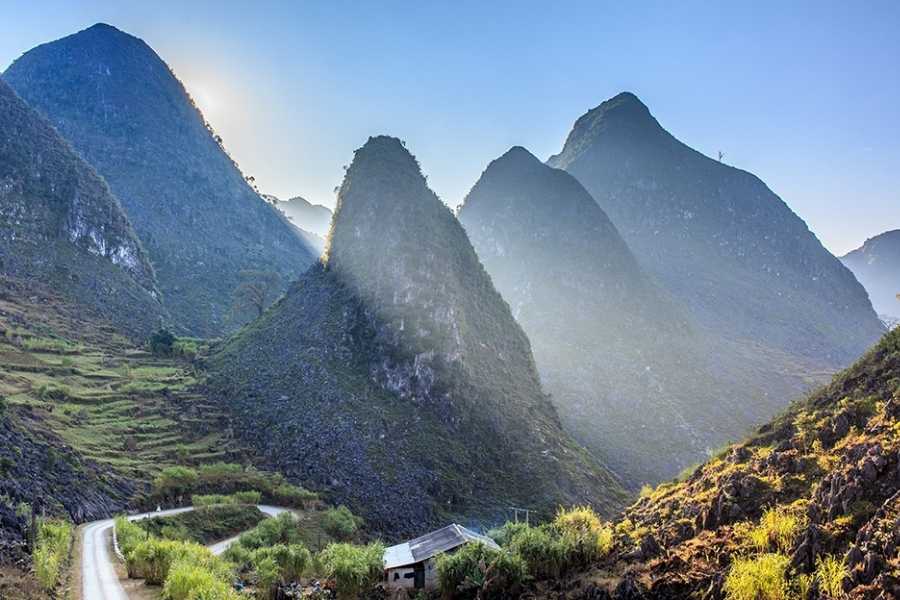
Ma Pi Leng Pass
Regarded as the most spectacular mountain pass in Vietnam, Ma Pi Leng Pass offers panoramic views of the Nho Que River and towering limestone cliffs. This pass is a highlight of the Ha Giang Loop, attracting motorbike riders from around the world. If you stay at one of the Ha Giang Loop hostels, plan an early morning ride to experience the sunrise over the pass.
Lung Cu Flag Tower
Standing proudly at Vietnam’s northernmost point, Lung Cu Flag Tower symbolizes national pride and historical significance. Climbing to the top rewards visitors with an incredible view of the surrounding countryside and the Chinese border. The best time to visit is during clear Ha Giang weather to fully appreciate the vast, unspoiled landscapes.
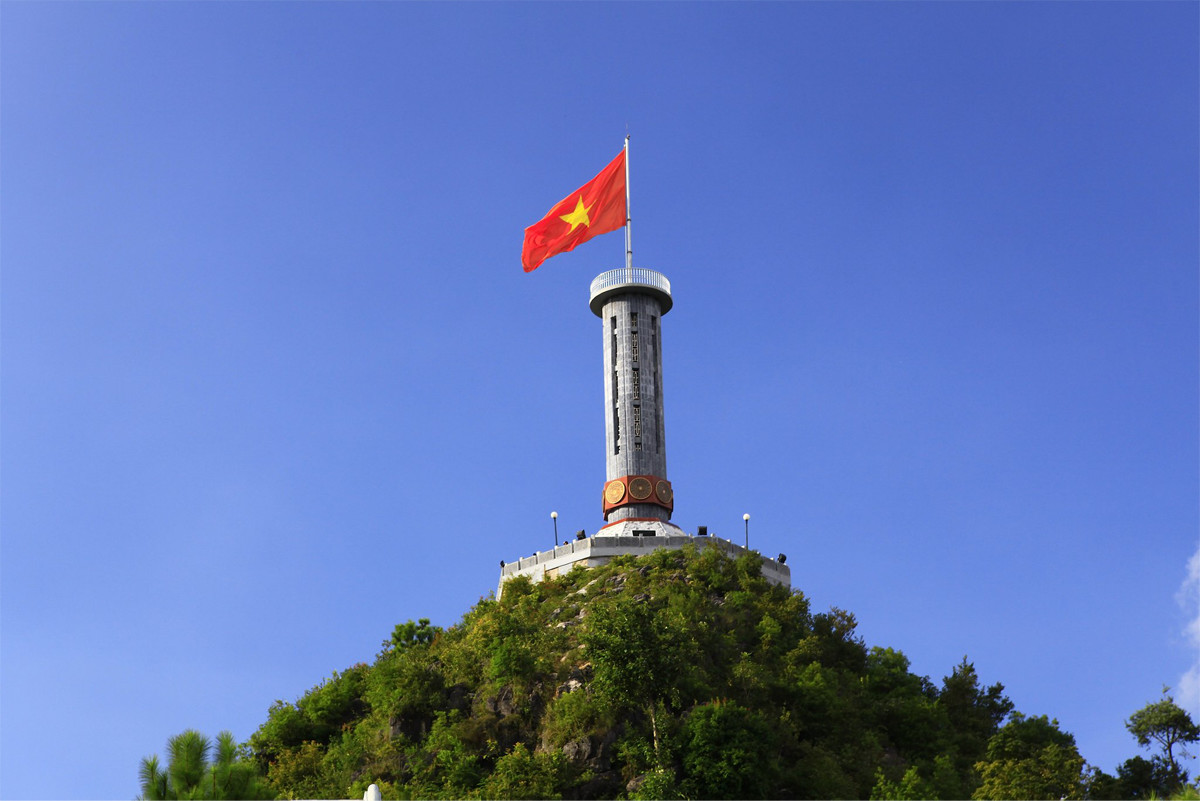
Dong Van Old Quarter
For a glimpse into Ha Giang’s history, the Dong Van Old Quarter is the perfect stop. This 100-year-old town is home to traditional Hmong, Tay, and Chinese-style architecture. The weekend market is a vibrant cultural experience, where locals gather to trade goods and socialize, making it an excellent addition to your Ha Giang travel itinerary.
Tham Ma Pass
A favorite stop for photographers, Tham Ma Pass features winding roads that twist through dramatic mountain scenery. Known as a testing ground for horses in the past, this pass now challenges motorbike riders with its sharp turns and steep inclines. For those staying at Ha Giang Loop hostels, it’s a must-ride section of the loop.
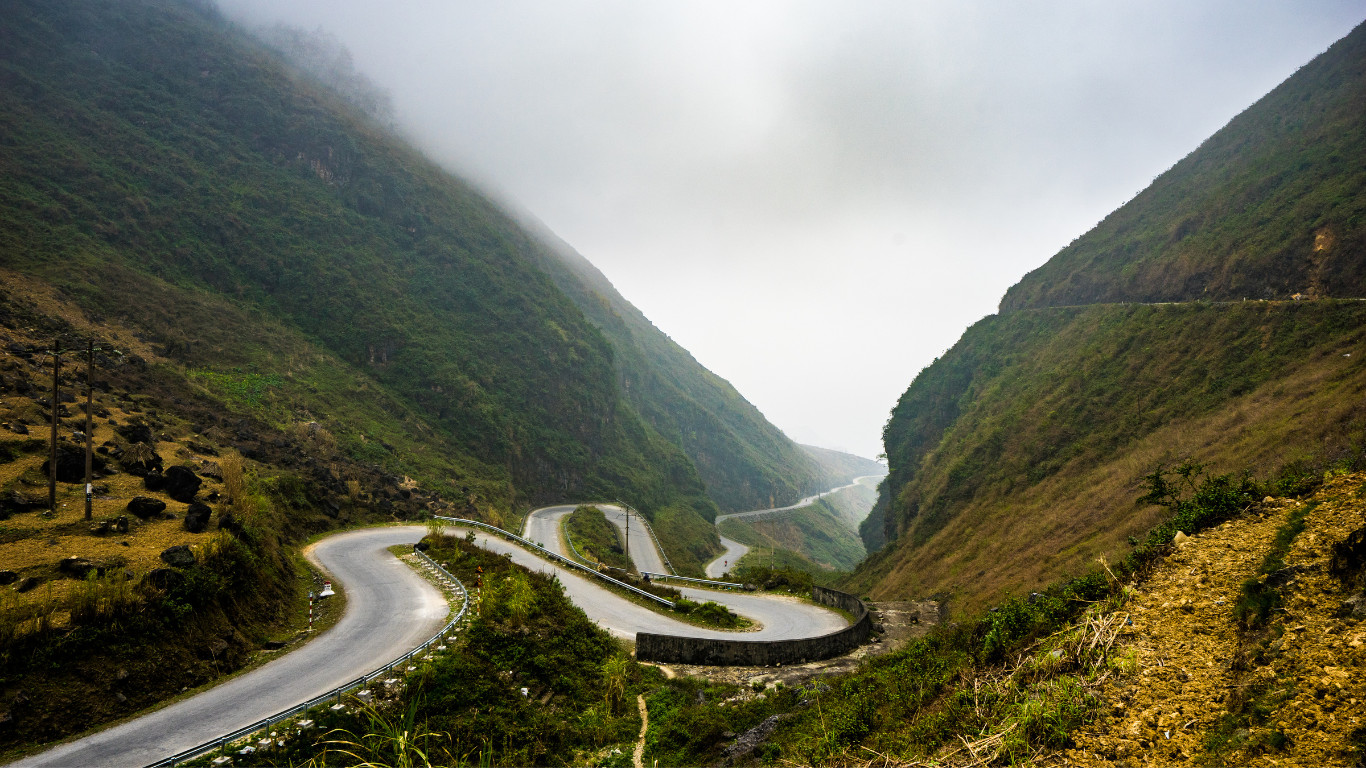
Quan Ba Heaven Gate
Quan Ba Heaven Gate marks the entrance to the Dong Van Plateau and offers a breathtaking view of Ha Giang’s rolling mountains. From here, visitors can also see the famous Twin Mountains, which are shrouded in local legends. Whether it's misty mornings or clear blue skies, the Ha Giang weather at this spot always creates a stunning atmosphere.
Du Gia Village
For those looking to experience Ha Giang’s rural charm, Du Gia Village is an off-the-beaten-path destination with rice paddies, waterfalls, and warm hospitality. This is a great place to relax after long rides, enjoy homestays with local families, and immerse yourself in the daily life of ethnic minorities.
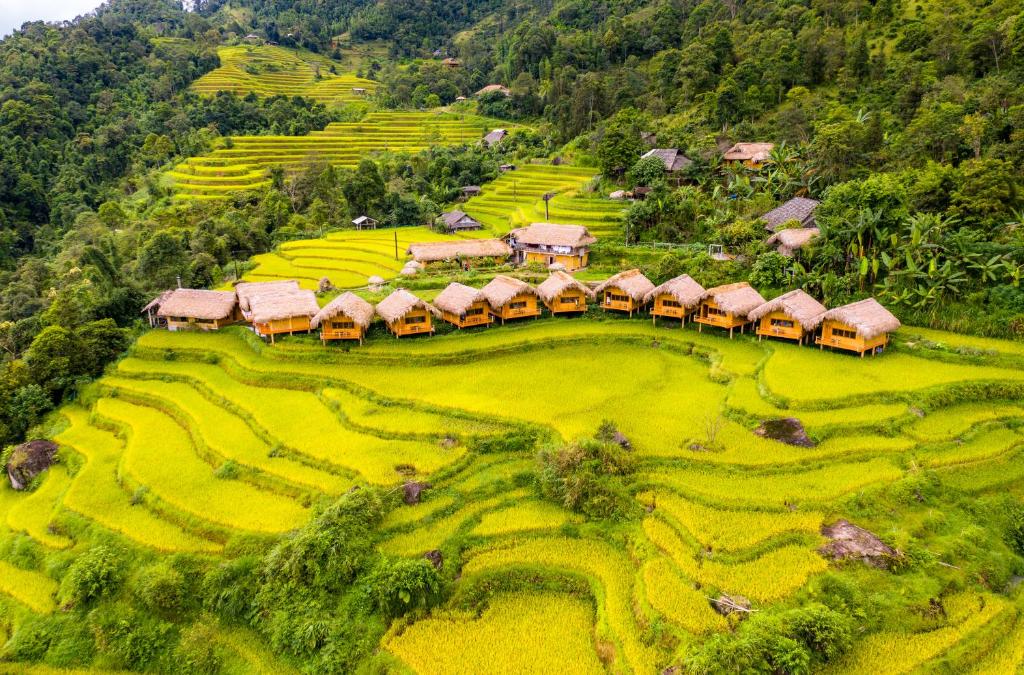
Meo Vac Market
Every Sunday, Meo Vac Market becomes a bustling hub of cultural exchange, where ethnic communities gather to buy, sell, and trade goods. This is one of the most authentic markets in Vietnam, offering unique handicrafts, traditional clothing, and regional delicacies. To fully enjoy the experience, check Ha Giang weather forecasts to avoid rainy days.
Nho Que River and Tu San Canyon
For a unique perspective of Ha Giang’s landscape, take a boat ride on the Nho Que River through Tu San Canyon—the deepest canyon in Southeast Asia. The emerald-green waters contrast beautifully with the towering cliffs, creating a surreal and peaceful environment that’s perfect for photography and relaxation.

Hoang Su Phi Rice Terraces
If you visit during the harvest season, usually from September to October, the Hoang Su Phi Rice Terraces will leave you in awe. The golden fields stretch across the mountainsides, forming breathtaking patterns that change with the light. This area is also home to many Ha Giang Loop hostels, making it a convenient place to stay while exploring the region.
Conclusion
Ha Giang is filled with remarkable attractions that showcase Vietnam’s natural beauty and cultural richness. Whether you’re braving the Ha Giang weather on a motorbike or staying at Ha Giang Loop hostels, these must-visit destinations will make your journey unforgettable. Plan your trip wisely to experience the best of this stunning province!
-
ARGIOLAS PERDERA
thông tin nhà sản xuất: Argiolas là nơi tạo ra rượu nho hàng đầu trên đảo Sardinia tạo ra rượu vang từ các giống nho địa phương như Cannonau, Bovale Sardo và Carignano. Antonio Argiolas, mất năm 2009 ở tuổi 102, thừa hưởng 7 mẫu ruộng nho từ phụ thân mình vào năm 1938 và là người đầu tiên trên đảo chuyển sang trồng nho tân tiến để theo đuổi chất lượng hơn số lượng, nhờ đó đưa Sardinia lên bạn dạng đồ rượu chát hoàn hảo của nhân loại. hiện tại, các cháu của ông Antonio, sở hữu một khu đất rộng 230 ha bao gồm một số vị trí trồng nho tốt nhất ở Sardinia, phát triển rượu chát, theo Wine Advocate: ‘Hương vị cần yếu cho bất kỳ ai thích mày mò về Sardinia và rượu nho của nó’. Argiolas Costamolino Vermentino 2018: 88 points Wine Spectator, 91 points James Suckling SERRALORI 2014: WINE ADVOCATE: 88 pts; WINE ENTHUSIAST: 89 pts
https://wewine.vn/ruou-vang/y -
TATACHILLA MCLAREN VALE CABERNET SAUVIGNON
Loại rượu: Vang đỏ Quốc gia: Úc Khu vực: McLaren Vale Giống nho: Cabernet Sauvignon Thương hiệu: Tatachilla Đặc điểm thử nếm: Khi uống rượu bạn còn cảm thu được cả mùi cam thảo hòa quyện với hạt tiêu đen, quả ớt chuông, vani, mùi thuốc lá, mùi gỗ sồi thoảng nhẹ khiến cho hương vị của rượu trở nên cực kì nhiều chủng loại, giàu có. Chính điều này sẽ khiến cho bạn nhớ mãi và luôn muốn được trải nghiệm lần nữa loại rượu này. thông tin nhà sản xuất: Nhà rượu Tatachilla được thành lập vào năm 1903. Tên nhà rượu có tức thị “Vùng Đất Đỏ”, thể hiện rõ nét về chất lượng rượu hoàn hảo cũng như những nguyên tắc làm rượu truyền thống, mang đậm tính lịch sử của vùng đất McLaren Vale. Nhà rượu Tatachilla liên hiệp phương thức làm rượu tốt nhất từ vang quả đât Cũ và trái đất thế hệ để tạo ra ra những chai vang chất lượng cao theo mỗi năm. Tatachilla đã được trao giải thưởng danh giá cho việc phát hành rượu chát theo phép tắc tay chân, biểu thị đam mê của hàng ngũ phát triển để làm nên những loại vang trắng, vang đỏ và vang sủi thượng hạng.
https://wewine.vn/ruou-vang/uc -
CHATEAU MARGAUX 1994
thông tin nhà sản xuất: Château Margaux, thuộc 1er Cru Classé, sở hữu vì gia tộc Mentzelopoulos từ năm 1978 - kể từ đó họ đã liên tiếp phát hành ra những loại rượu ngon nhất ở Médoc. Một trong những tòa nhà phệ nhất, hoành tráng nhất giữa lâu đài Médoc, Ch. Margaux được thành lập vào đầu thế kỷ 19, mặc dầu nghề trồng nho đã có trên khu đất này vài thế kỷ trước. thời đoạn đổi mới chủ vào thế kỷ 19 và đầu thế kỷ 20 đồng nghĩa với việc chất lượng của một số loại rượu Margaux không bất biến. ngoại giả, mọi chuyện đã thay đổi khi André Mentzenopoulos - người gốc Hy Lạp nhưng sinh sống tại Pháp từ năm 1958 và đạt được rất nhiều thắng lợi trong thị trường bán lẻ, siêu thị - mua lại lâu đài này vào năm 1977, chính điều này đã khôi phục lại vị thế vốn có của nó. André lập tức tăng cường đầu tư vào vườn nho và hầm rượu, mà đáng bi thương thay năm 1980 ông tắt hơi, sau đó con gái ông – Corinne lên nắm quyền. Bước đi khôn ngoan nhất của Corinne là tuyển dụng nhà phát hành rượu trẻ tuổi, khả năng Paul Pontallier để giám sát quá trình tạo ra. Paul ở vị trí lãnh đạo cho tới năm 2015, trong thời kì đó Margaux không những sản xuất được những chai rượu nho huyền thoại mà còn thể hiện được sự định hình về chất lượng qua các năm có niên vụ tốt và không quá tốt. Sebastien Vergne tiếp nhận vị trí giám đốc kỹ thuật từ năm 2016. Lâu đài có 82 ha trồng nho, chủ đạo là Cabernet Sauvignon chiếm 75%, 20% Merlot cùng với một số ít Cabernet Franc và Petit Verdot. Lạ một điều là ở Margaux lại có sản xuất rượu vang trắng- Pavillon Blanc từ 100% Sauvignon Blanc, nhị loại rượu vang đỏ dĩ nhiên là Ch. Margaux và Pavillon Rouge. phổ biến, khoảng 30.000 cỗ ván rượu nho đỏ được phát triển hàng năm, với Grand Vin chỉ chiếm hơn 40% tổng sản lượng. Vang trắng khoảng dưới 3.000 hòm. Quá trình lên men diễn ra trong áo quan gỗ sồi, Ch. Margaux được ủ trong áo quan mới 100% trong vòng 22 tháng. Paul Pontallier tin chắc rằng chính giống nho Cabernet Sauvignon đã sản xuất sự đặc trưng và chất lượng tuyệt vời của Ch. Margaux, bởi vì đó, chúng ta thuận lợi thấy được tỷ trọng Cabernet Sauvignon trong những chai Grand Vin của Ch. Margaux cũng trội hơn hẳn. rượu nho Margaux nổi tiếng với hương thơm tinh tế, nhưng mà điều này không có nghĩa đây là loại vang light-bodied. ngược lại, vào thời khắc hoàng kim, chai vang này sở hữu cấu trúc, độ tinh vi cao và độ sâu đáng nể.
https://wewine.vn/ruou-vang/phap
